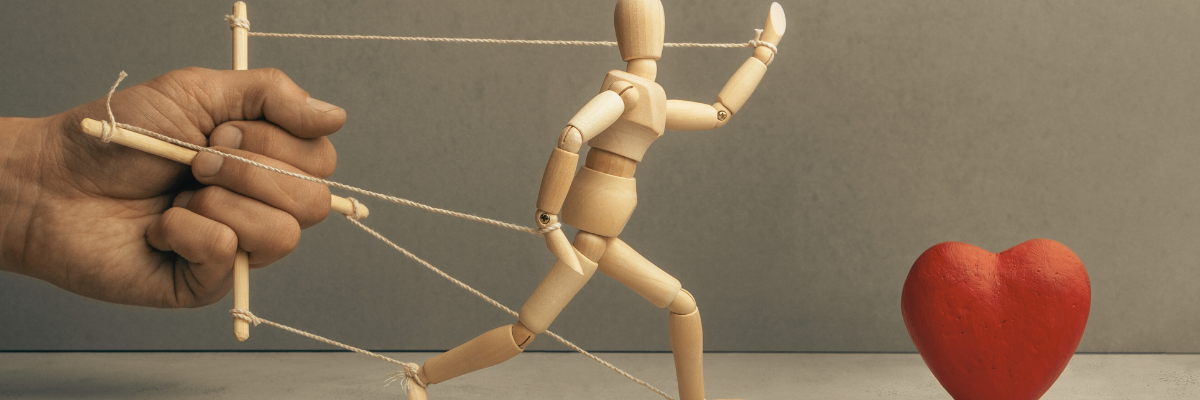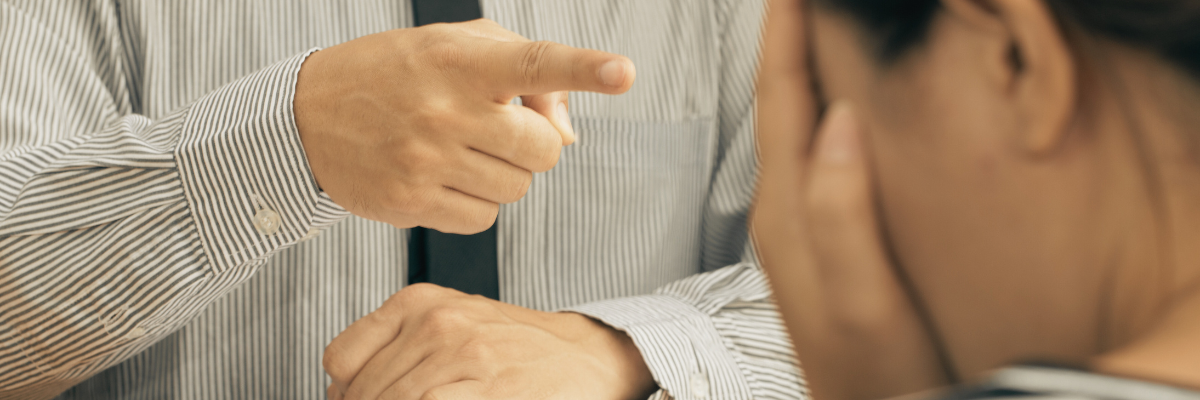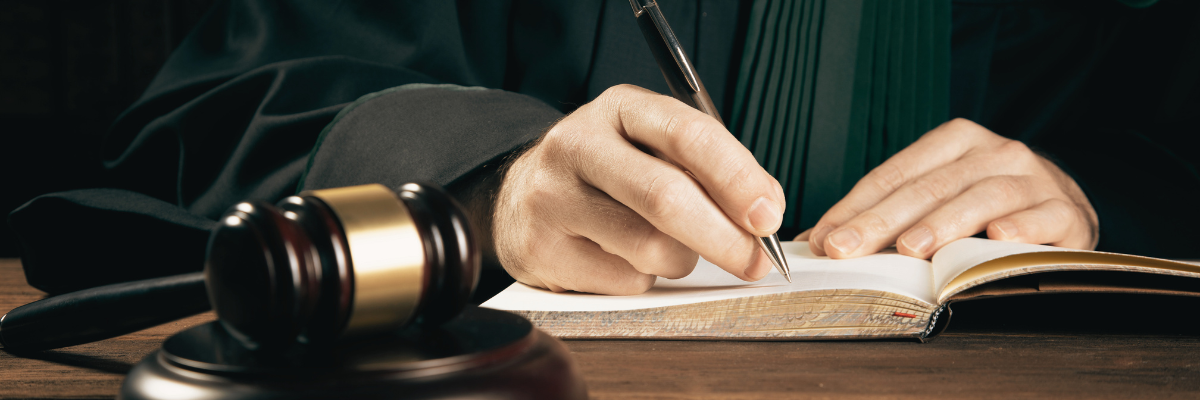Power and Control in Abuse: How to Spot the True Abuser
When we think about abuse, it’s easy to focus on the obvious—harsh words, manipulation, aggression, or even more overt forms of cruelty. But what’s often missed is the underlying dynamic that defines ALL abuse: power and control. At its core, abuse is never just about what’s happening on the surface. It's about who holds the power in any given situation and how they use it to manipulate, dominate, and control others.
Abuse can be hidden behind lies, confusion, and manipulative tactics that make it hard to know who’s telling the truth. In these cases, the clearest way to identify the true abuser is by looking at who holds the most power. This post will help you understand how power plays a key role in EVERY abusive situation and will give you the tools you need to identify the real abuser—even when things are unclear.

Power Comes in Many Forms
Power is not always about physical strength or money, although those can definitely play a part. Power in abusive dynamics can show up in different ways, and it’s important to understand the many types of power that people can hold over one another:
- Hierarchical Power
In certain settings, like workplaces, schools, or even family systems, some people automatically hold more power by virtue of their role or position. A boss has power over their employees. A parent has power over a child. In these situations, it’s much easier for those in a higher position to exert control, making it challenging for the person beneath them to push back or defend themselves.
- Financial Power
Money can be a huge source of control in abusive relationships. When one person controls the finances—whether it’s paying the bills, holding property, or making all the decisions about spending—they have immense power over the other person. If someone doesn’t have access to their own money or resources, it becomes almost impossible to escape or even stand up to the person holding the financial power.

- Social Power and Influence
Sometimes, the person who holds the most power is the one with the loudest voice or the most social influence. This might be someone who is well-liked, highly respected in their community, or even someone who seems charming and persuasive. They use their influence to shape the narrative, making it harder for the victim to be believed or supported.
- Emotional Power
Emotional abuse is another way people gain power in relationships. By wearing down their victim through manipulation, gaslighting, or emotional cruelty, abusers can make their victims feel powerless, confused, and dependent on them. Even without physical violence, emotional abuse can create a dynamic where one person holds all the control.
- Physical Power
Of course, physical power is a more traditional way to think about abusive dynamics. When someone is physically stronger, larger, or more intimidating, they can use their body and presence to instill fear and keep control over someone else. Physical violence doesn’t need to be frequent to create a lasting power imbalance. The threat of violence alone can keep a person trapped in a cycle of fear and submission.

Identifying the True Abuser
Who Holds the Power?
Now that we’ve established the different forms of power, it becomes easier to identify the true abuser in any situation. If two people are accusing each other of abuse, the question to ask yourself is: Who holds more power?
When one person holds more power in the dynamic, they have options. They can escape, they can find support, and they can protect themselves in ways that the person without power cannot. True abuse happens when the person without power is trapped—unable to leave, unable to defend themselves, and controlled by someone who is exerting their dominance.
Why Power Dynamics Matter in Understanding Abuse
Abuse is about control, and control is always linked to power. When we miss this important piece, it can become easy to get caught up in "he said, she said" battles or to misunderstand the true nature of the relationship. But when we focus on who holds the power, the true abuser becomes more apparent.
For example, in intimate partner abuse (IPA), a partner who controls the money, decisions, and social narrative may try to paint themselves as the victim. But if they have the power in the relationship, it's important to recognize that they also have the ability to escape, speak out, and protect themselves. The true victim, meanwhile, may be silent, fearful, or without resources—trapped by the control the abuser exerts.

The Depp-Heard Case
Power, Influence, and Public Perception
To get a clear idea about the dynamic of power and control in abusive relationships, we can look at the very public case of Johnny Depp and Amber Heard. While this case became a media spectacle, with both sides accusing the other of abuse, it is deeply important to take a look at the power dynamic between them. Johnny Depp, an internationally famous actor with a massive fan base, immense financial resources, and industry connections, clearly held far more societal influence than Amber Heard.
Despite the toxic behaviors displayed on both sides, the power in the relationship rested in Depp’s hands. His public image and wealth provided him with greater protection, and this imbalance made it nearly impossible for Amber to truly escape the dynamic. Even though she engaged in reactive behaviors, which were widely scrutinized and condemned, the key question remains: Who had the greater power?
This case highlights the point that the person with the most control, whether through societal standing, influence, or resources, often manipulates the narrative of abuse. The imbalance of power created a situation where Amber’s experiences could be downplayed or disregarded, reinforcing the very tactics of control that many abusers use to maintain their influence.
When we look at cases like these, it’s incredibly important to consider the broader dynamics at play, beyond the headlines and the reactions. The person who holds the most power in a relationship is the one able to wield control, and true victims may find themselves fighting for their lives—emotionally, physically, or financially—with no easy way out.

This combination of photos shows actors Johnny Depp, left, and Amber Heard inside the courtroom for Depp’s libel suit against Heard at the Fairfax County Circuit Court on April 12, 2022, in Fairfax, Va.
Empowering Yourself with Knowledge
Understanding these dynamics is empowering. It arms you with the ability to see through the lies, manipulation, and confusion that abusers often create. If you or someone you love is in an abusive situation, look closely at the balance of power in the relationship. Who controls the resources, who has the ability to leave, and who is dominating the narrative?
Knowing where the power lies can help you make sense of the chaos and take steps toward finding support, safety, and healing. Abuse isn’t just about words or actions—it’s about control. And when we recognize that, we’re better equipped to stand up to it and support those who are being harmed.
Wishing you freedom and safety,
Gretchen
SOMATIC TRAUMA SPECIALIST + ENERGETIC INTUITIVE

SHARE ON PINTEREST








